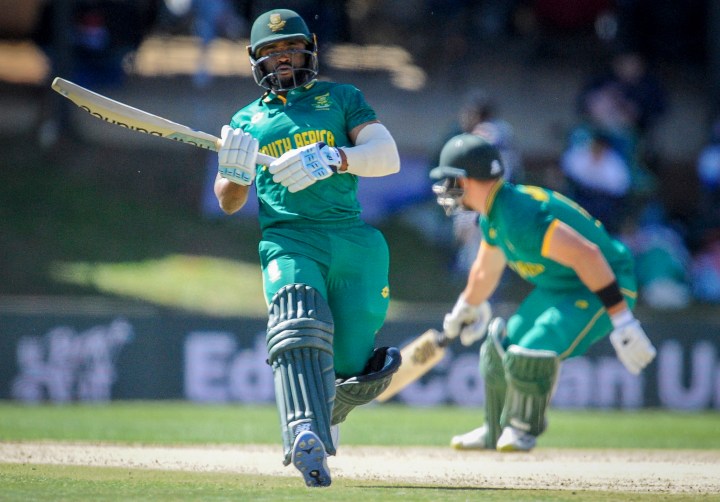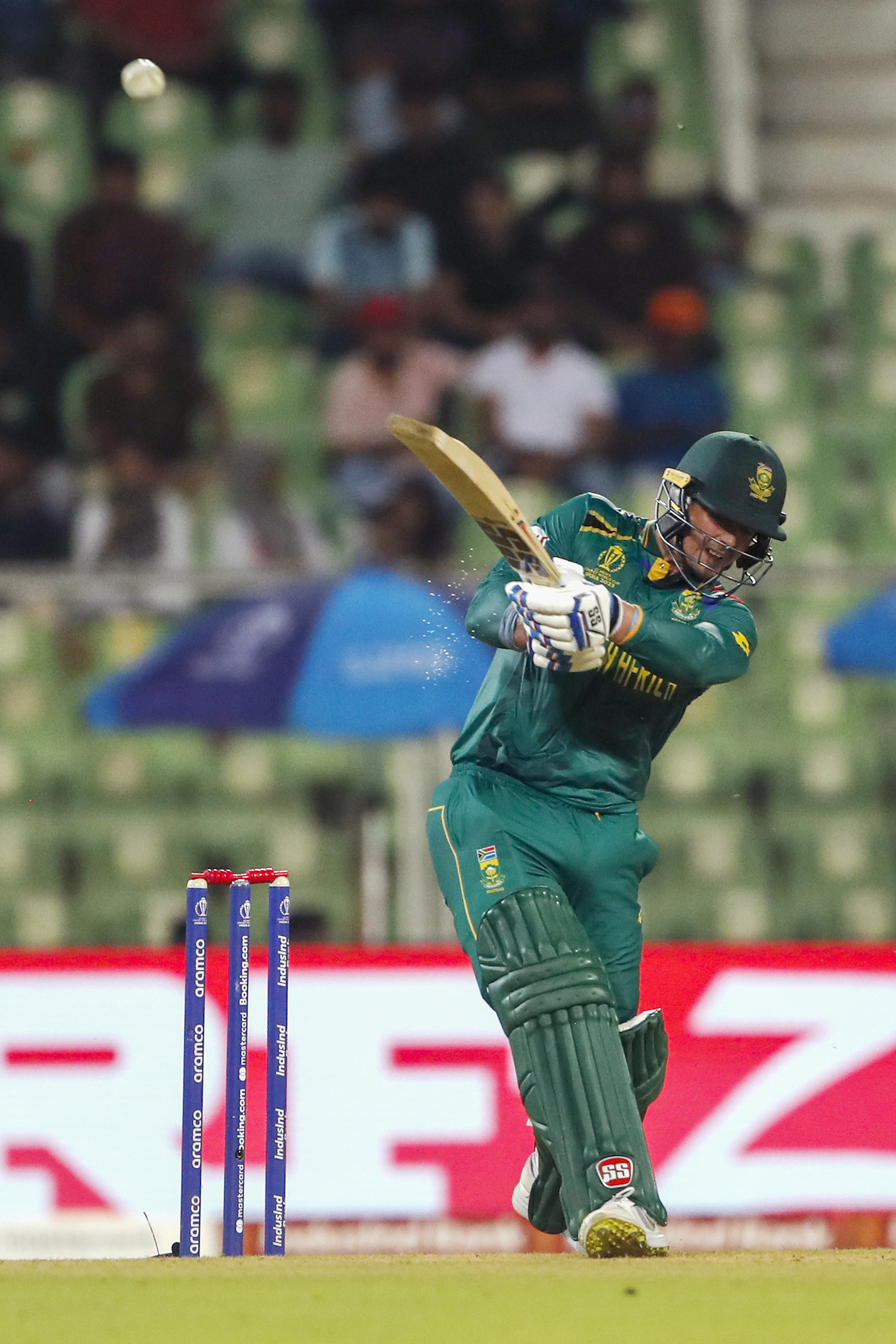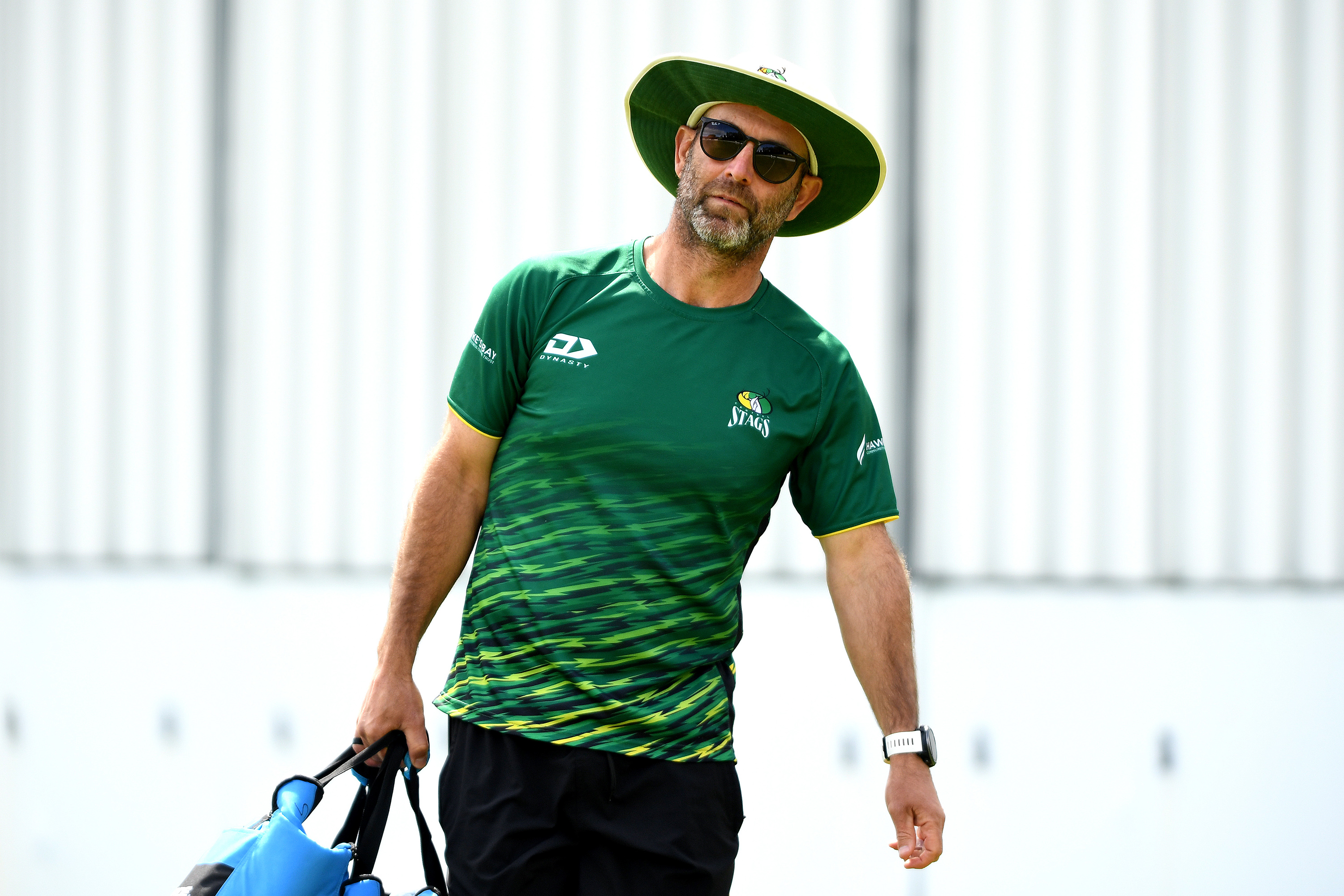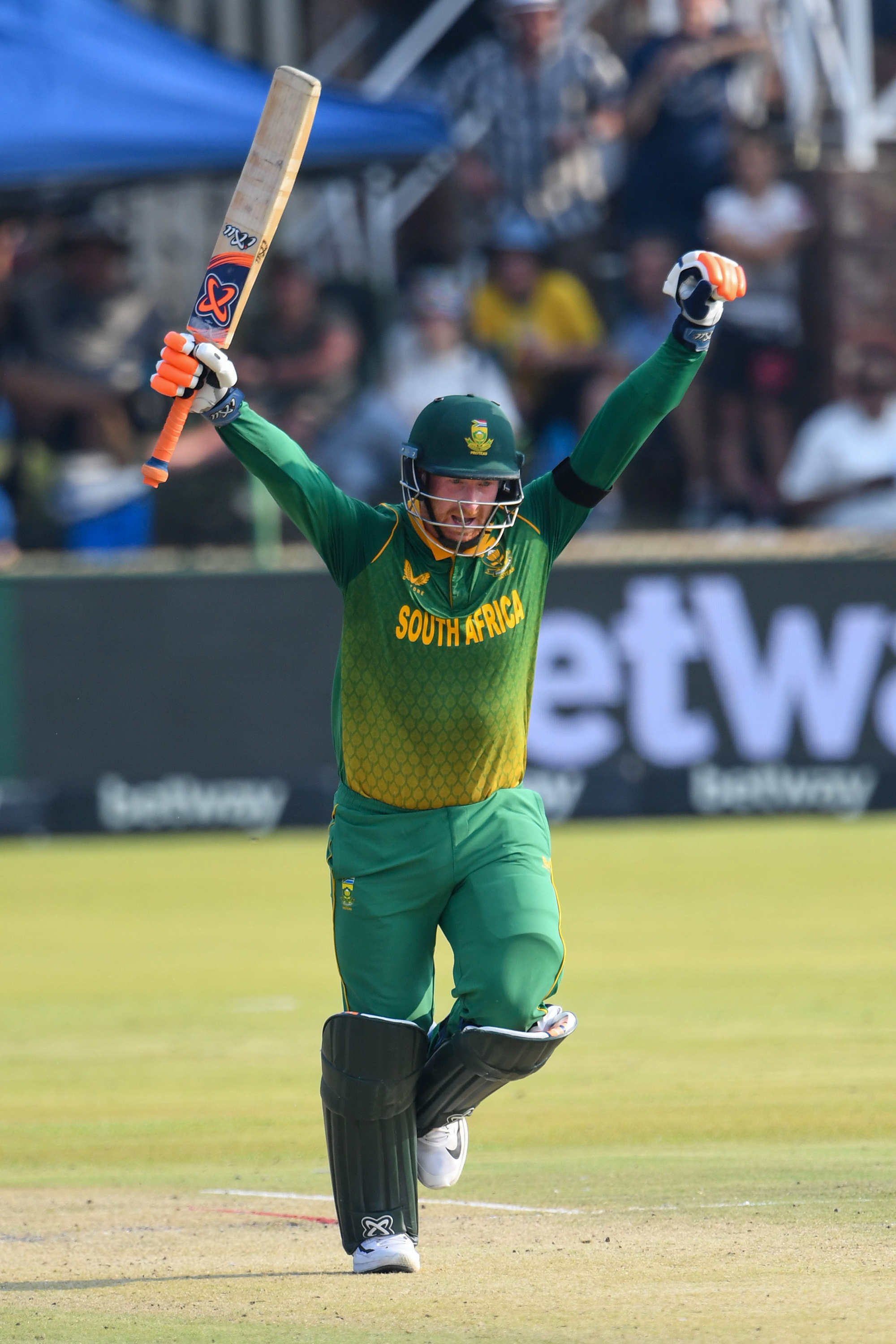CRICKET
Top six must fire on all cylinders for Proteas to claim World Cup glory

South Africa’s top order are in good form, but they need to carry that through every match – because there’s not much back-up.
Proteas head coach Rob Walter has backed his decision to select eight bowlers and seven batters in his Cricket World Cup squad by playing only six recognised batters since he took the helm.
The seventh batter in the squad, Reeza Hendricks, is a top-order replacement should someone get injured or lose form.
The six regular batters are all experienced. Temba Bavuma and Heinrich Klaasen were the only players making their World Cup debuts when the first ball was bowled against Sri Lanka in Delhi on Saturday, 7 October.
The Proteas have a talented top six: each averages over 40 in the format and is in striking form at the right time. The bowling attack has real menace and versatility.
A lack of all-rounder resources might be a problem, though.
Each country plays nine group-stage matches at the World Cup. Despite the strength of the batting unit, South Africa will eventually have a top-order collapse and will need Marco Jansen and whoever bats at eight and nine to play a proper innings. But the hope is that the collapse doesn’t happen in a must-win match.
Walter has a different opinion about the dearth of late-order hitters.
“The No 7 spot is key in both T20 and ODI cricket, but for me it’s about assessing what the combined capability is of seven, eight and nine. Do they make up two batters?” he said.
“So, if I look at Marco, we’ve seen him play some pivotal knocks at No 7 already. And he’s a guy who’s getting better and better as far as his all-around capability goes.”
The weight of expectation lies heavy on the shoulders of the 23-year-old.
Andile Phehlukwayo was a late addition to the squad because of Sisanda Magala’s failure to remain fit. It remains to be seen how Walter uses the all-rounder, considering he was not in his original plans for the tournament.
Dangerous openers

Quinton de Kock in action in a World Cup warm-up match against New Zealand in Thiruvananthapuram, India on 2 October 2023. (Photo: Surjeet Yadav/Getty Images)
The right-left combination of Quinton de Kock and Bavuma has proven to be a formidable opening pair. De Kock will represent South Africa for the final time in the format, having declared his intent to retire at the announcement of the squad on 5 September.
The maverick batter and gloveman has a poor record in 50-over World Cups – by his usual high standards.
In 2015, after being rushed back from an ankle injury, De Kock finished the tournament with only 149 runs in nine innings.
It went slightly better for the swashbuckling strokemaker in 2019 when he struck 305 runs at an average of 38.1, which was still below his career numbers.
In his final campaign for the national side, the hope is that it will be De Kock’s best.
Skipper Bavuma, although only 30 matches into his ODI career, has been a revelation. He has a career average just shy of 55 and smacks it around at a strike rate of 91.1. Bavuma has been South Africa’s highest run-getter in the format this year.
If his form continues until the end of the tournament, he could hold the trophy aloft on 19 November.
Middle-order nudgers

Proteas head coach Rob Walter coach. (Photo: Joe Allison/Getty Images)
Rassie van der Dussen was South Africa’s second-highest run scorer in the 2019 World Cup – only behind former captain Faf du Plessis – with 311 runs.
He came into the tournament under the radar, having only made his debut a few months earlier, but has developed into a key cog in the South African batting line-up.
Van der Dussen currently lies third on the International Cricket Council’s ODI batting rankings, only trailing Pakistan’s Babar Azam and India’s Shubman Gill. But the No 3 batter has struggled with the willow this year, scoring only one century and one 50 in his 11 innings.
It is also the first year that he has averaged below 40 in the format, at 31.72.
At No 4, South Africa have probably their most important player in Aiden Markram. Markram is the only one of the top six who offers anything with the ball and is in immaculate form with the bat – and the team has no like-for-like replacement.
This year has been Markram’s long-awaited breakthrough in the format. The talented batter has shown exponential potential since leading South Africa to an under-19 world title in 2014, but for a long time has failed to show it on a consistent basis in the international game.
In 2023, Markram has scored 577 at an average of 64.1 and a strike rate of 119.70 in 11 innings. Those numbers are scary.
Then there are the finishers

Heinrich Klaasen of the Proteas celebrates his century during the third ODI between South Africa and West Indies in Potchefstroom on 21 March 2023. (Photo: Lee Warren/Gallo Images/Getty Images)
South Africa’s assigned finishers are at five and six: Klaasen and David Miller, the last two recognised batters.
Klaasen, like Markram, has also had a breakout year. In his 10 innings, Klaasen has smashed 527 runs at an average of 58.55 and a ludicrous strike rate of 151.43.
Klaasen is perhaps South Africa’s best player of spin, and with experience of playing in the Indian Premier League – where he dominated the middle overs for a struggling Sunrisers Hyderabad last season – will be the Proteas’ go-to man to take down the tweakers.
Miller is South Africa’s most experienced player and, like De Kock, will be playing in his third Cricket World Cup.
The mighty left-hander had a superb debut tournament in 2015, when he battered 324 runs in eight innings at an average of 64.8 and a strike rate of 139.05 before South Africa fell at the semifinal stage in Australia and New Zealand.
His 2019 campaign was a lot quieter as he only struck 136 runs in six outings, knocking it about at 86.6.
The Proteas need their most senior player in the side to display a similar type of form to 2015, especially with the lack of batting to come after him.
On paper, South Africa’s batters rank among the best in the world. But for South Africa to go all the way in this World Cup they will have to prove they are the best on the field, too. DM
This story first appeared in our weekly Daily Maverick 168 newspaper, which is available countrywide for R29.




















 Become an Insider
Become an Insider
Comments - Please login in order to comment.